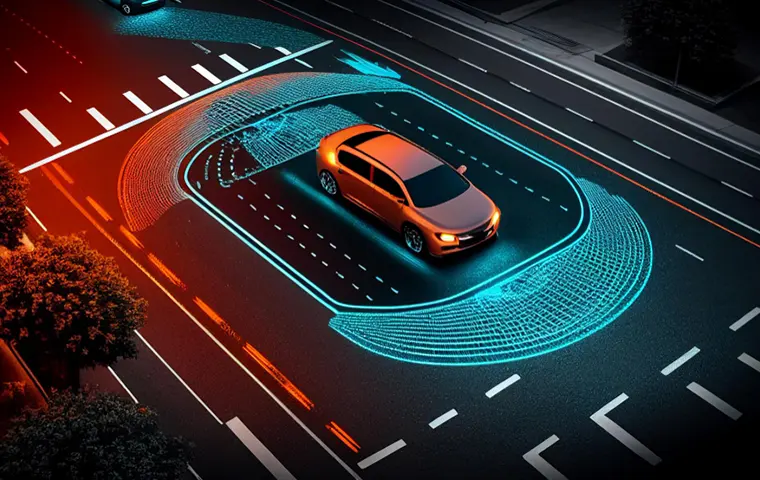Vehicle safety has come a long way, playing a crucial role in protecting drivers on the road. This article will delve into the commercial vehicle safety innovations we’ve seen over the years. We’ll explore how these advancements are exceptionallyvital for fleet operations. Let’s cruise through car safety technology history, from the early beginnings to the cutting-edge features of today.
The Evolution of Car Safety: From Past to Present
Car safety technology has evolved significantly over the years. Let’s look at some of the highlights:
- Seat Belts (1950s): Seat belts became a basic yet vital safety feature, drastically reducing accident injuries.
- Anti-lock Braking System (ABS) (1970s): ABS prevented wheel lock-up during braking, significantly improving vehicle control.
- Airbags (1980s): First widely adopted in the 1980s, airbags provided crucial protection during collisions, saving countless lives.
- Electronic Stability Control (ESC) (1990s): ESC enhanced vehicle stability by detecting and reducing loss of traction.
- Advanced Driver Assistance Systems (ADAS) (2000s): ADAS, like automatic emergency braking and lane departure warnings, started a new era of active safety features.
- Autonomous Emergency Braking (AEB) (2010s): AEB systems detect potential collisions and automatically apply the brakes to prevent or mitigate accidents.
Each of these innovations marked a significant step forward in automotive safety. They form the groundwork for the advanced systems we see in today's vehicles, especially in commercial fleets.
Modern Advancements and Fleet Safety Technology Trends
Recent years have seen remarkable advancements in vehicle safety features. Many of these innovations are particularly significant for fleet safety:
- Telematics Systems: Modern fleets leverage telematics for real-time tracking. Fleet managers can improve safety by monitoring driving behavior and vehicle performance.
- Collision Avoidance Systems: These systems alert drivers of potential hazards, reducing the likelihood of accidents in fleet vehicles.
- Driver Monitoring Systems: These systems detect driver fatigue or distraction, enhancing road safety in fleets.
- Automated Vehicle Safety Features: Features like adaptive cruise control and lane-keeping assist add an extra layer of safety by assisting drivers in maintaining control.
- Fleet Safety Management Software: This software integrates data analytics to identify risk patterns and train drivers. Fleet managers who utilize safety software find fewer accidents and improved safety standards.
- Electric Vehicles (EVs) in Fleets: The adoption of EVs in fleets isn't just eco-friendly; it also brings advanced safety features inherent in newer vehicle designs.
These advancements represent the direction of fleet safety technology trends, demonstrating a solid commitment to enhancing safety and efficiency in the fleet industry.
Fleet Management: Safety Systems and Efficiency
Modern businesses rely on innovative fleet management safety systems. For example, Azuga’s state-of-the-art GPS tracking helps monitor vehicle locations and driving behavior. Using these technologies promotes safer driving practices.
These systems also offer maintenance alerts and vehicle diagnostics. You can use this information to prevent accidents and ensure vehicle reliability.
Additionally, features unique to Azuga, like driver scorecards, provide valuable insights. You can create a safety culture that encourages safe driving habits and aids in targeted driver training.
The Impact and Future of Safety Innovations
The evolution of automotive safety has reduced accidents and enhanced driver protection. Innovations like autonomous braking and advanced driver-assistance systems have significantly lowered crash rates and injury severity.
Looking forward, we anticipate further advancements in this field. There is a particular focus on the integration of AI and autonomous technology. These future developments promise to continue the positive trend in vehicle safety. This progress is especially critical as we strive for safer roads and more efficient fleet operations.
Azuga is at the Forefront of Safety Technology
We’ve followed the journey of vehicle safety technology, from simple seat belts to advanced driver-assistance systems. The continued evolution of safety technology is essential; each innovation brings us closer to safer fleet operations.
Azuga's cutting-edge technology, such as GPS tracking and driver scorecards, is pivotal in this ongoing journey. By integrating these technologies, fleets can achieve compliance and significant improvements in safety standards. To see how Azuga can transform your fleet's safety and efficiency, try a demo of our software today.








